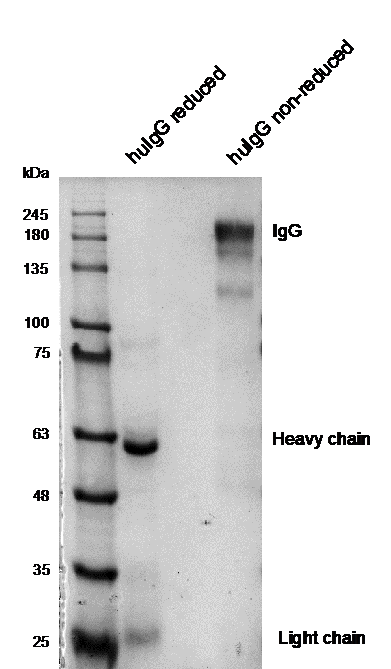Cat. #152647
Anti-ORF7a [3C9]
Cat. #: 152647
Unit size: 100 ug
Target: SARS CoV ORF7a (also known as U122)
Class: Monoclonal
Application: IF ; WB
Reactivity: Virus
Host: Mouse
£300.00
This fee is applicable only for non-profit organisations. If you are a for-profit organisation or a researcher working on commercially-sponsored academic research, you will need to contact our licensing team for a commercial use license.
Contributor
Institute: A*STAR Accelerate Technologies Pte Ltd
Tool Details
*FOR RESEARCH USE ONLY (for other uses, please contact the licensing team)
- Name: Anti-ORF7a [3C9]
- Research fields: Cell signaling and signal transduction;Neurobiology
- Clone: 3C9
- Class: Monoclonal
- Conjugation: Unconjugated
- Molecular weight: 14 kDa
- Reactivity: Virus
- Host: Mouse
- Application: IF ; WB
- Description: Monoclonal antibody used to study the role of ORF7a within SARS coronavirus. Background and Research Application A novel coronavirus (termed as SARS-CoV) has been identified as the etiological agent of severe acute respiratory syndrome (SARS). The SARS-CoV genome encodes the essential CoV replication and structural proteins. In addition, the genome encodes eight 8 putative accessory proteins (i.e. ORFs 3a, 3b, 6, 7a, 7b, 8a, 8b and 9b) that do not show significant homology to viral proteins of known coronaviruses, i.e. they are unique to SARS-CoV. It is known to infect humans, bats and various other mammals. ORF7a, also known as U122, consists of 122 amino acids and is localized mainly in ER-Golgi intermediate compartment, where coronaviruses are known to assemble and bud. ORF7a can also be incorporated into the virion. The over-expression of ORF7a induces apoptosis and block cell cycle progression at G0/G1 phase. This is via interfering with pro-survival proteins such as Bcl-XL, Bcl-w, Mcl-1, and A1.
- Immunogen: GST-7a (16-111 amino acids)
- Immunogen uniprot id: J9T5H6
- Isotype: IgG1
- Myeloma used: Sp2/0-Ag14
Target Details
- Target: SARS CoV ORF7a (also known as U122)
- Molecular weight: 14 kDa
- Target background: Monoclonal antibody used to study the role of ORF7a within SARS coronavirus. Background and Research Application A novel coronavirus (termed as SARS-CoV) has been identified as the etiological agent of severe acute respiratory syndrome (SARS). The SARS-CoV genome encodes the essential CoV replication and structural proteins. In addition, the genome encodes eight 8 putative accessory proteins (i.e. ORFs 3a, 3b, 6, 7a, 7b, 8a, 8b and 9b) that do not show significant homology to viral proteins of known coronaviruses, i.e. they are unique to SARS-CoV. It is known to infect humans, bats and various other mammals. ORF7a, also known as U122, consists of 122 amino acids and is localized mainly in ER-Golgi intermediate compartment, where coronaviruses are known to assemble and bud. ORF7a can also be incorporated into the virion. The over-expression of ORF7a induces apoptosis and block cell cycle progression at G0/G1 phase. This is via interfering with pro-survival proteins such as Bcl-XL, Bcl-w, Mcl-1, and A1.
Applications
- Application: IF ; WB
Handling
- Format: Liquid
- Unit size: 100 ug
- Shipping conditions: Shipping at 4° C
References
- Tan et al. 2007. J Virol. 81(12):6346-55. PMID: 17428862.
- Induction of apoptosis by the severe acute respiratory syndrome coronavirus 7a protein is dependent on its interaction with the Bcl-XL protein.

![Western blotting on lysates prepared from SARS-CoV-infected Vero E6 cells harvested at different time points postinfection. Western blot analysis was performed to determine the expression level of SARS-CoV proteins; using anti-ORF7a [3C9]; anti-3a mouse polyclonal antibody; anti-M rabbit polyclonal antibody;and anti-N mouse polyclonal antibody. An anti-actin monoclonal antibody was used to verify equal protein loading](https://cancertools.org/wp-content/uploads/8f0a4067-2418-4af7-a3c0-49705b734818.png)


